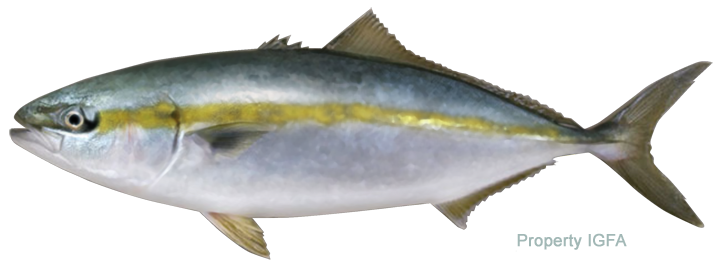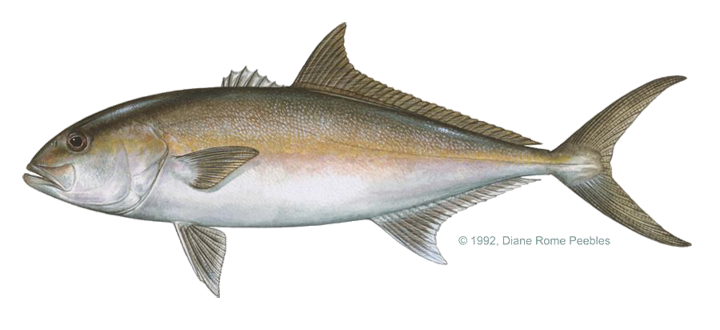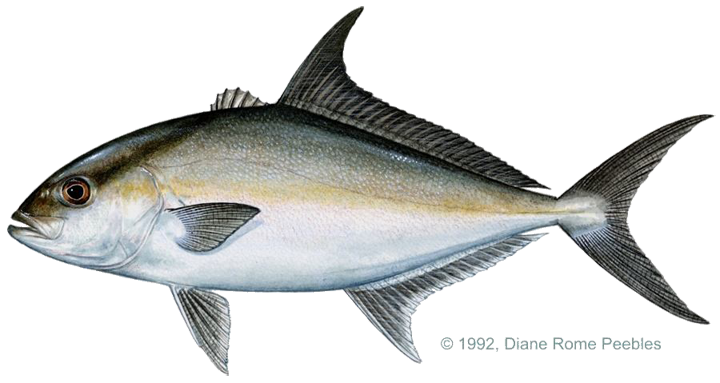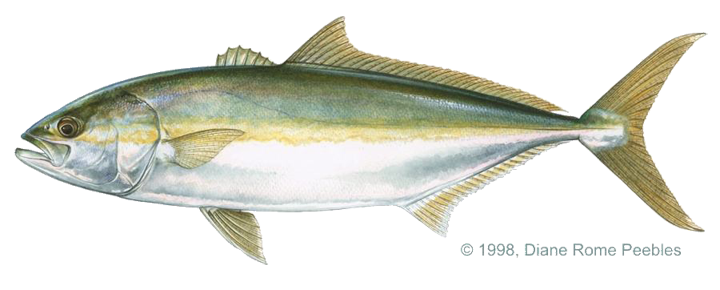Game Fish Identification Reference Guides
Buri (Japanese amberjack)
(Seriola quinqueradiata)
(Seriola quinqueradiata)

(Temminck & Schlegel, 1845); CARANGIDAE FAMILY; also called Buri
Japanese amberjack occur primarily from the Northwest Pacific around Japan and the eastern Korean peninsula to the Hawaiian Islands. They are plankton feeders and are known to exhibit shoaling behavior. They bear a superficial resemblance to yellowtail (Seriola landi), but can be distinguished by the angular appearance of the upper rear edge of the jaw and the pelvic and pectoral fins of equal length.
Buri are highly esteemed by those who chase them. The collection of juveniles is the basis for prosperous aquaculture in Japan; they are raised in captivity and marketed fresh for sashimi.
Japanese amberjack occur primarily from the Northwest Pacific around Japan and the eastern Korean peninsula to the Hawaiian Islands. They are plankton feeders and are known to exhibit shoaling behavior. They bear a superficial resemblance to yellowtail (Seriola landi), but can be distinguished by the angular appearance of the upper rear edge of the jaw and the pelvic and pectoral fins of equal length.
Buri are highly esteemed by those who chase them. The collection of juveniles is the basis for prosperous aquaculture in Japan; they are raised in captivity and marketed fresh for sashimi.
















